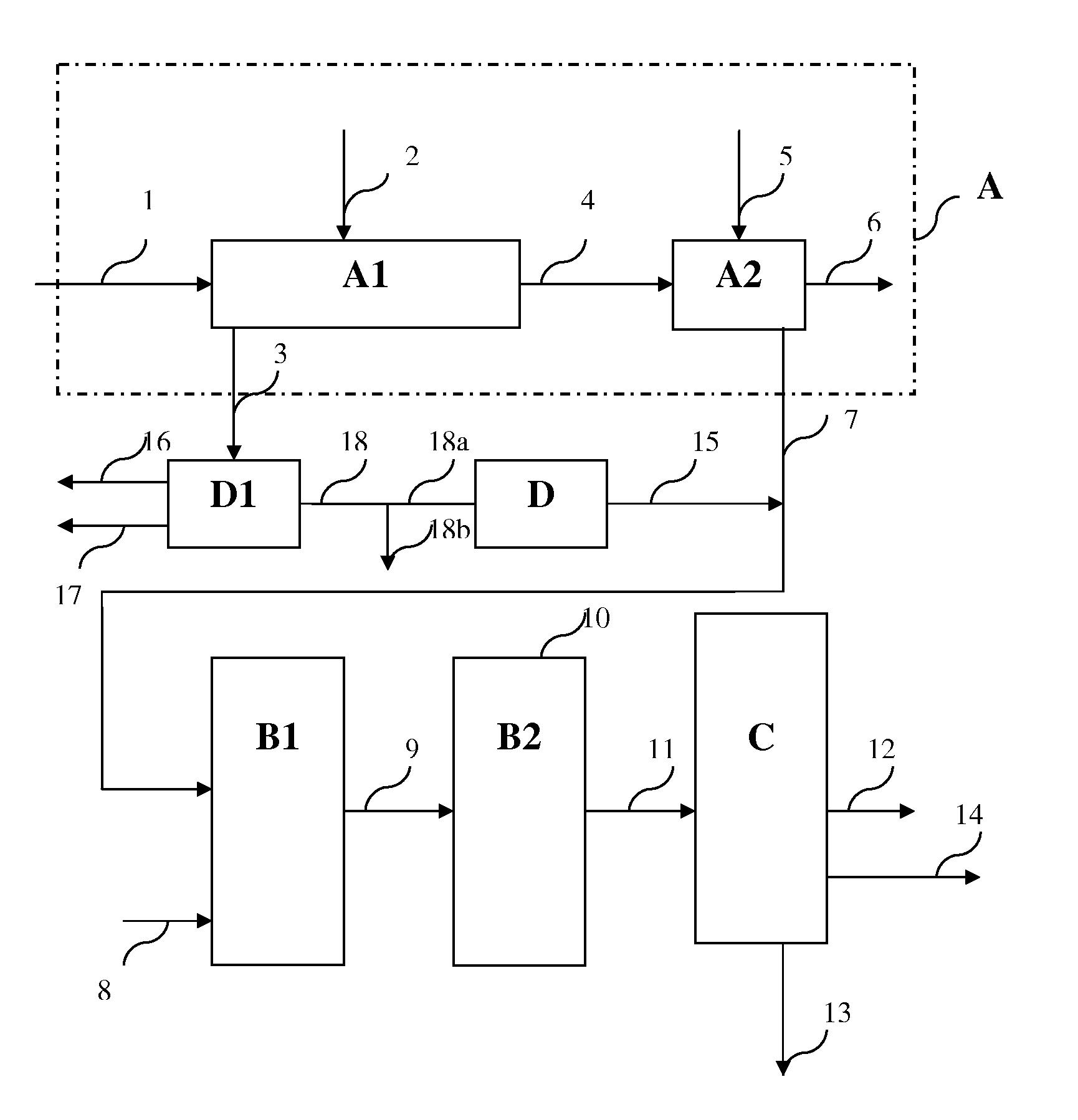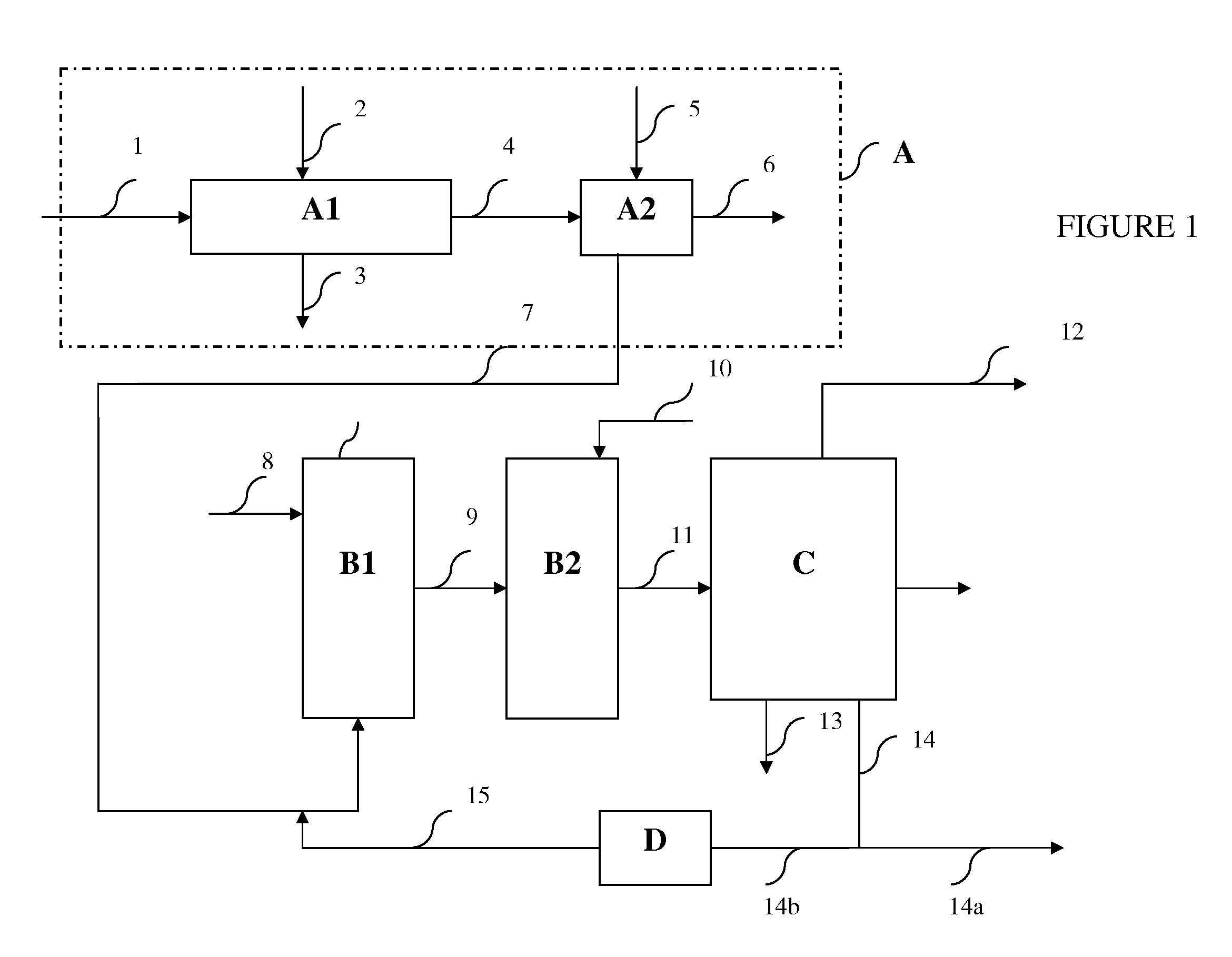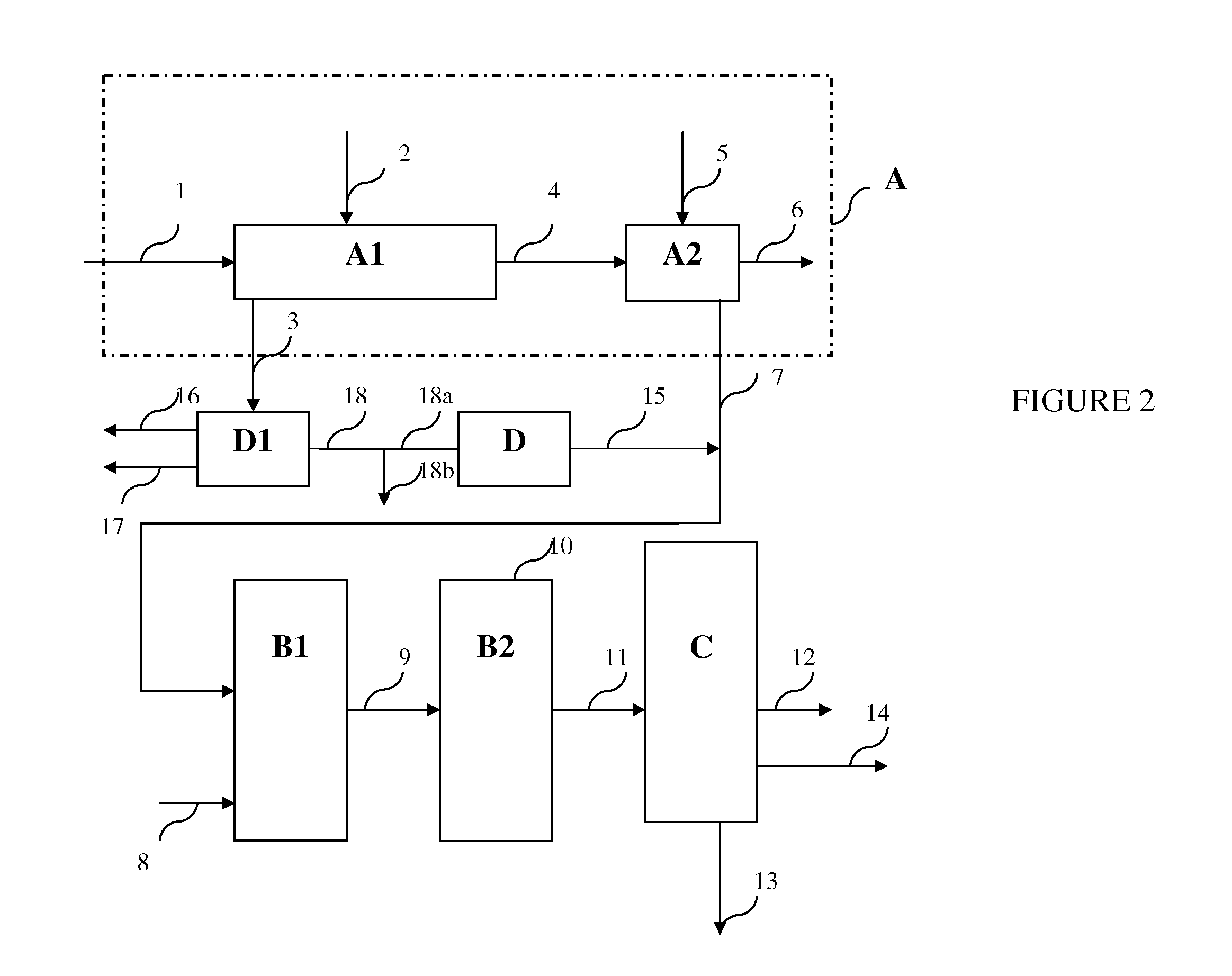In situ production of furfural in a controlled amount in an alcohol production unit from a lignocellulosic biomass
- Summary
- Abstract
- Description
- Claims
- Application Information
AI Technical Summary
Benefits of technology
Problems solved by technology
Method used
Image
Examples
example 1
[0092]A process for the production of ethanol from “Kraft” type paper pulp is considered. The pulp was obtained from softwood pre-treated in a Kraft type papermaking process, which is an alkaline process carried out in the presence of sodium hydroxide. The lignin-depleted pulp from the Kraft process is then washed and neutralized, then introduced into the process for the conversion of cellulosic substrate to ethanol by enzymatic hydrolysis and fermentation of glucose and mannose (sugars containing 6 carbon atoms).
[0093]The process treated 40 tonnes / hour of pulp (based on dry matter). The composition of the dry matter was as follows:
Cellulose (%)77.75% Xylanes (%)8.96%Mannanes (%)5.26%Others (%)7.68%
[0094]The process for conversion to ethanol contained the following steps: enzymatic hydrolysis, alcoholic fermentation, distillation and dehydration of ethanol, and separation of solid residues from the vinasses.
[0095]The enzymatic hydrolysis was operated at a pH of 5, with an inlet stre...
example 2
[0102]A process for the production of ethanol from “Kraft” type paper pulp is considered. The pulp was obtained from hardwood pre-treated in a Kraft type papermaking process, which is an alkaline process carried out in the presence of sodium hydroxide. The lignin-depleted pulp from the Kraft process was then washed and neutralized, then introduced into the process for the conversion of cellulosic substrate into ethanol by enzymatic hydrolysis and fermentation of glucose.
[0103]The process treated 18 tonnes / hour of pulp (based on dry matter). The composition of the dry matter was as follows:
Cellulose (%) 72%Xylanes (%)15.9%Mannanes (%) 0%Others (%)12.1%
[0104]The process for conversion into ethanol contained the following steps: enzymatic hydrolysis, alcoholic fermentation, distillation and dehydration of ethanol, and separation of solid residues from the vinasses.
[0105]The enzymatic hydrolysis was operated at a pH of 5, with an inlet stream containing 20% dry matter. Under the select...
example 3
[0109]A process for the production of ethanol from wheat straw is considered. The straw was pre-treated using an AFEX type process, which is an alkaline process carried out in the presence of ammonia. The pre-treated substrate was converted into ethanol by enzymatic hydrolysis and fermentation of glucose.
[0110]The process treated 120 tonnes / hour of straw (based on dry matter). The composition of the dry matter was as follows:
Cellulose (%)43%Xylanes (%)26%Mannanes (%) 0%Others (%)31%
[0111]The AFEX treatment does not dissolve any of the substrate and most of the chemical catalyst is recycled in the gas phase; thus, the composition of the pre-treated substrate was very similar to the incoming straw.
[0112]The process for conversion into ethanol contained the following steps: enzymatic hydrolysis, alcoholic fermentation, distillation and dehydration of ethanol, and separation of solid residues from the vinasses.
[0113]The enzymatic hydrolysis was operated at a pH of 5, with an inlet strea...
PUM
| Property | Measurement | Unit |
|---|---|---|
| Temperature | aaaaa | aaaaa |
| Temperature | aaaaa | aaaaa |
| Temperature | aaaaa | aaaaa |
Abstract
Description
Claims
Application Information
 Login to view more
Login to view more - R&D Engineer
- R&D Manager
- IP Professional
- Industry Leading Data Capabilities
- Powerful AI technology
- Patent DNA Extraction
Browse by: Latest US Patents, China's latest patents, Technical Efficacy Thesaurus, Application Domain, Technology Topic.
© 2024 PatSnap. All rights reserved.Legal|Privacy policy|Modern Slavery Act Transparency Statement|Sitemap



